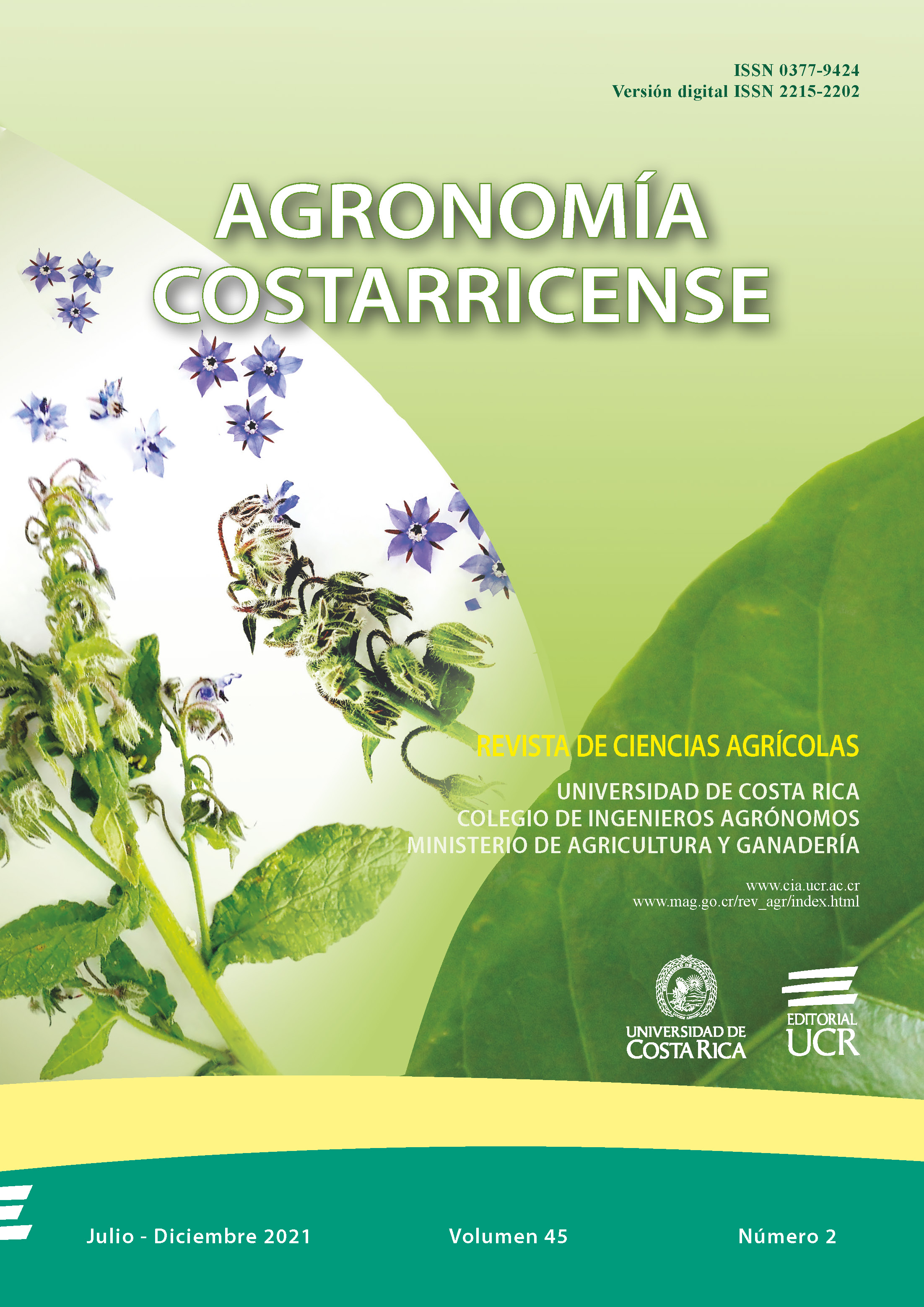Abstract
Introduction. Mucuna is a prostrate and climbing plant, whose biomass can contribute annually to the soil up to 331 kg of nitrogen per hectare. Currently, it is used as a natural fertilizer and soil cover in palm and mango plantations and in rotation system with corn and beans. Objective. The objective was to analyze the development of M. pruriens and establish the appropriate sowing density for seed production, in a trellis system. Materials and methods. The study was developed at the Fabio Baudrit Moreno Experimental Station (EEAFBM) of the Universidad de Costa Rica. The growth and productivity of the mucuna sown at densities of 4900, 3267 and 2450 plants.ha-1 were analyzed. The vegetative and reproductive development of the plant, the phenology and the accumulated degree days were evaluated. The leaf area index, harvest index and yield were calculated. Results. The total cultivation cycle took 19 weeks. The productivity of the plants sown at densities of 4900, 3267 and 2450 plants.ha-1, was 2611, 1207 and 807 kg.ha-1, respectively. During week 15, the maximum value of the leaf area index (5,8) was reached. At 4900 plants.ha-1 the highest yield was obtained (2611 kg.ha-1), with a harvest index (0,19) and pods per plant (125). Conclusion. Regarding the development of the plants, no differences were found between the densities used, however, with the density of 4900 plants.ha-1, a higher crop yield was achieved.


